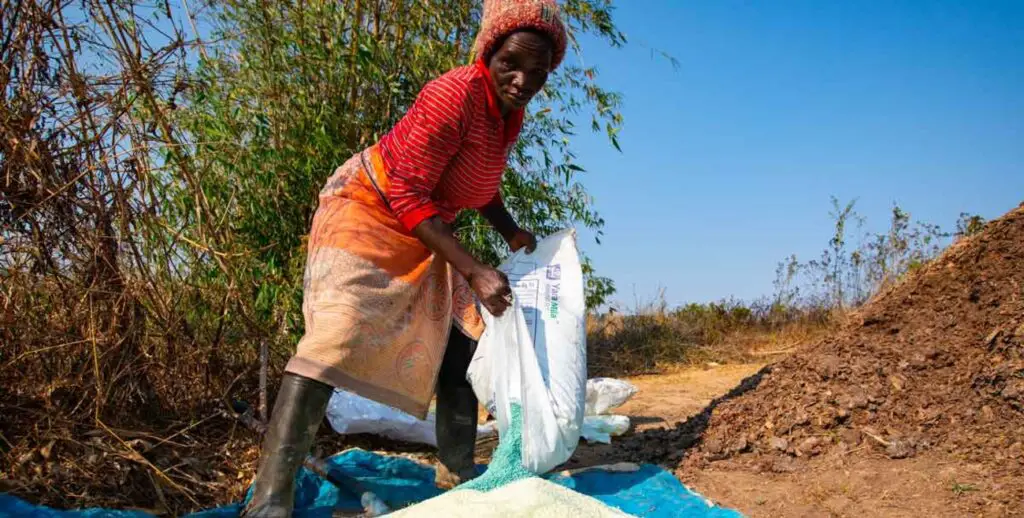- The negotiations between Tanzania and Morocco for establishing a fertilizer blending facility at Kisarawe to be completed next week
- The facility will assist Tanzanian farmers as well as East Africa Farmers achieve food security
- Morocco has a clear edge in the manufacture of fertilizers, including phosphorus. It has more than 70% of the world’s reserves of phosphate rock, which is where the phosphorus used in fertilizers comes from.
The negotiations between Tanzania and Morocco for establishing a fertilizer blending facility at Kisarawe, Coastal Region, are expected to be completed next week.
That deal had stalled from 2016 but President Samia Suluhu Hassan’s recent visit to Senegal, when she also met and spoke with Moroccan delegations, jump started the conversation.
According to yesterday’s statement by Zakaria El Goumiri, the Moroccan ambassador to Tanzania, the discussions centred on ways to promote agriculture in both nations. The ambassador said the facility will assist Tanzanian farmers grow nutritious foods suited for domestic and international markets.
“While Morocco is well renowned for its fertilizer, Tanzania has a lot of land. We will boost food security of both nations if we establish a blending plant. He told journalists that Morocco and other foreign nations will be eager to invest in Tanzania as soon as the company is founded.
Goumiri said several Moroccan businesses have expressed an interest in establishing operations in Tanzania.
According to him, Tanzania would also open its markets to sisal fibres, and there will be numerous financial exchanges between the two nations. Papayas and mangoes, for instance, can be sent to Morocco from Tanzania and other African nations.
To tap the potential of the land and assist local farmers in planting the best crops such that they can capitalize on the factor, he made hints that they also planned to begin offering training to small-scale farmers in Zanzibar and on the Tanzanian mainland.
The process to obtain a title deed is now being completed, according to Mr. Samuel Mshote, General Manager of Tanzania Fertilizer Company (TFC), who spoke with The Citizen.
“When we receive the title deed, work will begin right away,” said Mshote. He adde that developing a fertilizer plant on the 15 hectares of land will assist in resolving issues with soil health.
Tanzanian Fertilizer Consumption
Tanzania’s use of fertilizer as per The World Bank’s compilation of development indicators shows that Tanzania used 15.858 kg of fertilizer per hectare of arable land in 2018.
Tanzania uses less fertilizer than recommended and the country’s agriculture is dominated by low-input, rain-fed subsistence farming, which lowers crop yields.
The fertilizer sector in Tanzania Urea and the blends of calcium ammonium nitrate (CAN), diammonium phosphate (DAP), and nitrogen-phosphorus-potassium fertilizer are among the primary fertilizers used in Tanzania (NPK).
Despite the official government guideline of 50 kg of urea and 50 kg of DAP for one acre of the corn crop, farmers often apply less than nine kilos of fertilizer per acre. Tanzanian Prices for Fertilizers Small-scale farmers are unable to purchase fertilizers due to high prices. Over 90% of the nation’s fertilizers are imported and expensive.
The move will boost East Africa’s food security.
The fertilizer industry in Morocco is significant, with enormous production capacity and global reach, just behind Canada, China, and Russia as the top four exporters of fertilizer worldwide come this country.
The three primary categories of fertilizers are nitrogen fertilizers, phosphorus fertilizers, and potassium fertilizers. The fertilizer market had a value of roughly US$190 billion in 2020.
Morocco has a clear edge in the manufacture of fertilizers, including phosphorus. It has more than 70% of the world’s reserves of phosphate rock, which is where the phosphorus used in fertilizers comes from.
As a result, Morocco serves as a gatekeeper for the world’s food supply networks because phosphorus is necessary for the growth of all food crops. Indeed, all plant life does. Unlike other limited resources like fossil fuels, phosphorous has no substitute.
The right time to expand
With 15.1% of all fertilizer exports, Russia is presently the world’s top exporter. And one of the biggest weaknesses both for Europe and Africa is fertilizer. For instance, 30% of the fertilizer required by the EU27 (the EU’s 27 member states) is imported from Russia.
The fact that Russia is the second-largest producer of natural gas globally only strengthens its beneficial position. All phosphorus and nitrogen fertilizers have gas as a primary ingredient.
As a result, the invasion of Ukraine by Russia has grave consequences for world food security. Fertilizers can be used as an economic weapon or tool in terms of supply and supply alone.
To counteract attempts to use fertilizer as a weapon, Morocco can thus take on a central role in the world’s fertilizer market and act as the world’s food supply’s gatekeeper.
